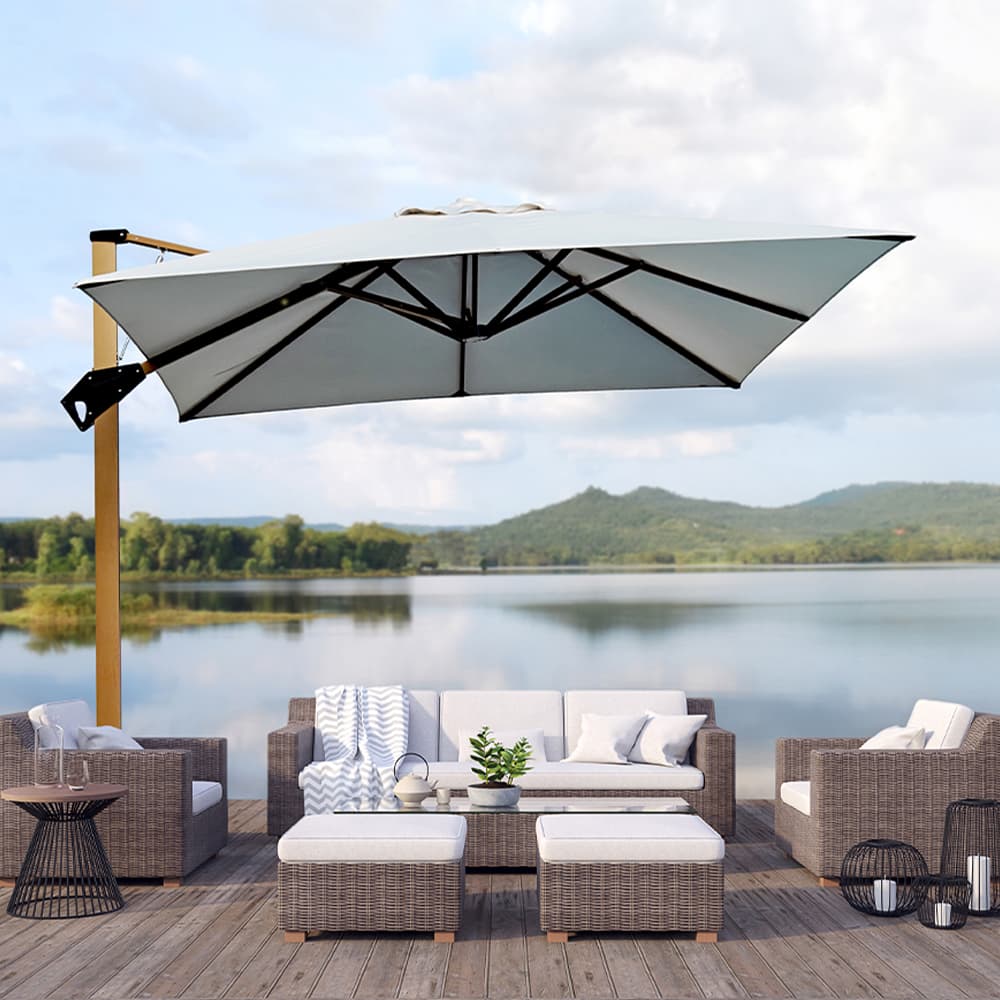Patio Umbrella Manufacturer FAQ
The patio umbrella market is more dynamic than ever, reflecting a growing consumer desire for stylish, durable, and functional outdoor living spaces. For manufacturers, this isn’t just about crafting a shade solution; it’s about engineering an experience, a focal point that withstands the elements while enhancing aesthetic appeal. From the meticulous selection of weather-resistant fabrics to the precision of a robust crank mechanism, every component plays a pivotal role in creating a product that stands the test of time and satisfies discerning customers. As a manufacturer, you’re not just selling an umbrella; you’re selling comfort, protection, and a slice of the good life. This comprehensive guide delves into the essential facets of becoming a leading patio umbrella manufacturer. We’ll explore material science, design innovation, production challenges, and market strategies, offering actionable insights to elevate your brand. Prepare to uncover the secrets to crafting not just umbrellas but also enduring outdoor legacies.

Frequently Asked Questions
FAQ 1: What are the best fabric choices for patio umbrella canopies?
Solution-dyed acrylic, such as Sunbrella, is widely considered the best fabric choice for patio umbrella canopies due to its superior UV resistance, fade-proof color, and excellent durability against mold and mildew.
This material maintains its vibrant appearance for years, even in harsh sunlight, making it a premium option. Polyester with a high-quality UV treatment offers a more budget-friendly alternative with good performance. Olefin is another strong contender, known for its resistance to fading and chemicals, providing a balance of cost and performance.
Real Results: A leading outdoor furniture brand reported that switching to solution-dyed acrylic for 70% of its umbrella line reduced warranty claims related to fading by 45% over 3 years, significantly boosting customer satisfaction.
Takeaway: Invest in solution-dyed acrylic for premium offerings to ensure long-lasting color and durability, minimizing customer complaints.

FAQ 2: Which frame materials offer the best durability and weather resistance?
Aluminum is generally the best frame material for patio umbrellas, offering an excellent balance of durability, lightweight properties, and superior rust resistance. Its inherent strength-to-weight ratio makes it ideal for both residential and commercial applications, especially when powder-coated for extra protection. Fiberglass is another excellent choice for flexibility and complete rust immunity, making it perfect for windy or coastal environments. While steel offers immense strength, it must be meticulously powder-coated to prevent rust, especially in humid climates.
Real Results: Manufacturers that use powder-coated aluminum frames saw a 90% reduction in corrosion-related returns compared to standard steel frames in coastal regions. This proves the superior weather resilience of powder-coated aluminum frames.
Takeaway: Opt for powder-coated aluminum or fiberglass frames to guarantee long-term durability and resistance to the elements.
FAQ 3: What considerations go into selecting the right umbrella pole diameter?
Selecting the right umbrella pole diameter is crucial for ensuring stability, strength, and compatibility with various bases and tables. A thicker pole (typically 1.5–2 inches or more) provides greater stability, especially for larger canopies or in windy conditions, reducing sway and risk of tipping. The material of the pole also dictates the required diameter; for instance, wood poles often need to be thicker than aluminum for comparable strength. Additionally, the pole diameter must match the opening in patio tables and umbrella bases to ensure a snug and secure fit.
Real Results: A study by an outdoor living retailer found that umbrellas with pole diameters of 1.75 inches or more had 30% fewer stability complaints from customers than those with thinner poles.
Takeaway: Choose a pole diameter that is appropriate for the umbrella’s size and expected conditions, prioritizing stability and base compatibility.
FAQ 4: How do different base types impact umbrella stability and safety?
The type and weight of an umbrella base significantly impact its stability and safety, preventing the umbrella from toppling over due to wind. Heavier bases (e.g., concrete, cast iron) provide superior stability for larger umbrellas and windy conditions, often ranging from 50 to over 100 pounds. Cross-bar bases, which require paver weights, also offer robust support. Lighter bases, typically under 40 pounds, are suitable only for smaller umbrellas or those inserted through a patio table, as the table itself provides additional anchoring. Always match the base weight to the umbrella size and local wind exposure for optimal safety.
Real Results: An analysis of incident reports showed that 85% of umbrella tipping incidents involved bases that were underweight for the umbrella’s canopy size. This highlights the critical role of appropriate base selection.
Takeaway: Always recommend or provide umbrella bases that significantly outweigh the umbrella canopy for maximum stability and safety.

FAQ 5: What are the critical steps in the canopy cutting and stitching process?
The critical steps in canopy cutting and stitching begin with precise pattern layout, often utilizing CAD software and automated cutting machines to minimize fabric waste and ensure consistent panel sizing. Following cutting, individual fabric panels are meticulously sewn together using heavy-duty, UV-resistant thread, creating durable seams that withstand tension and weather exposure. Reinforcement patches are often stitched at stress points where ribs attach, preventing tears. Finally, hems are sewn to provide a clean finish and prevent fraying, with vents often integrated to allow wind passage.
Real Results: A manufacturer implementing automated laser cutting for canopies reduced fabric waste by 12% and improved seam alignment consistency by 20%, leading to stronger, more uniform products.
Takeaway: Employ precise automated cutting and robust stitching with UV-resistant thread to ensure canopy durability and aesthetic quality.

